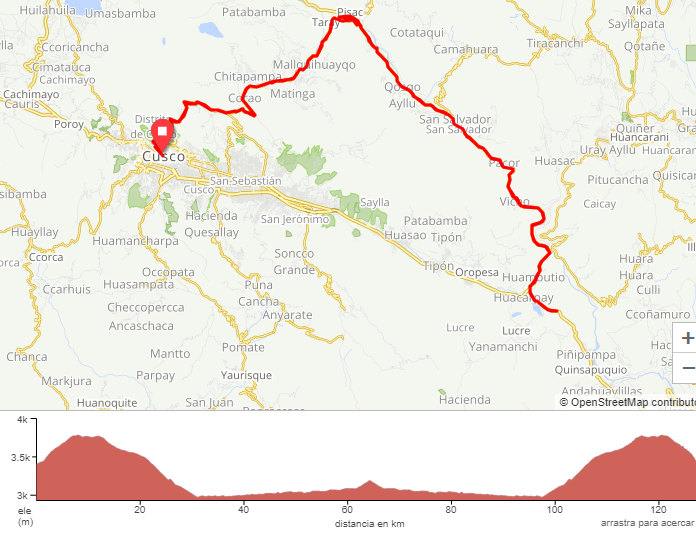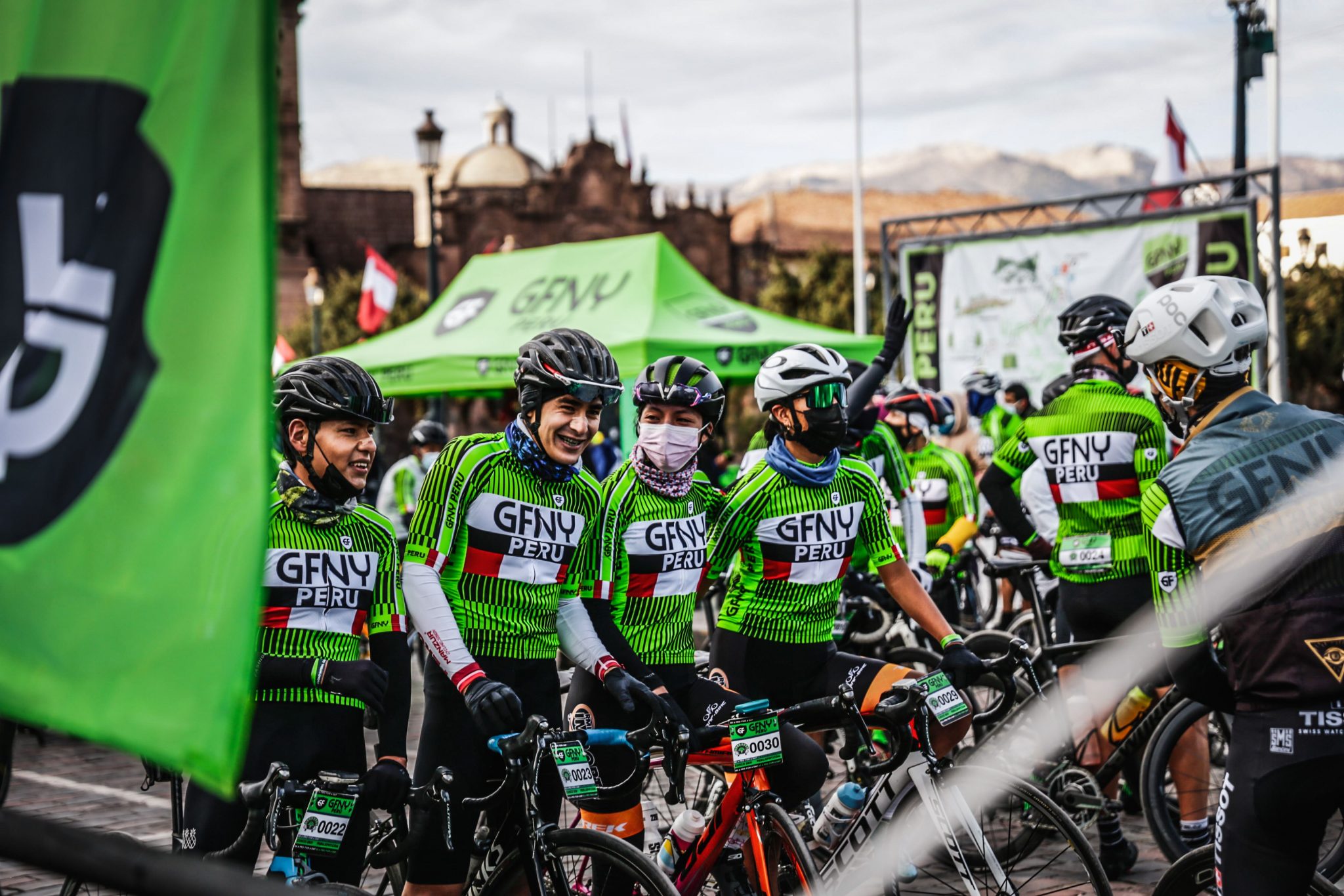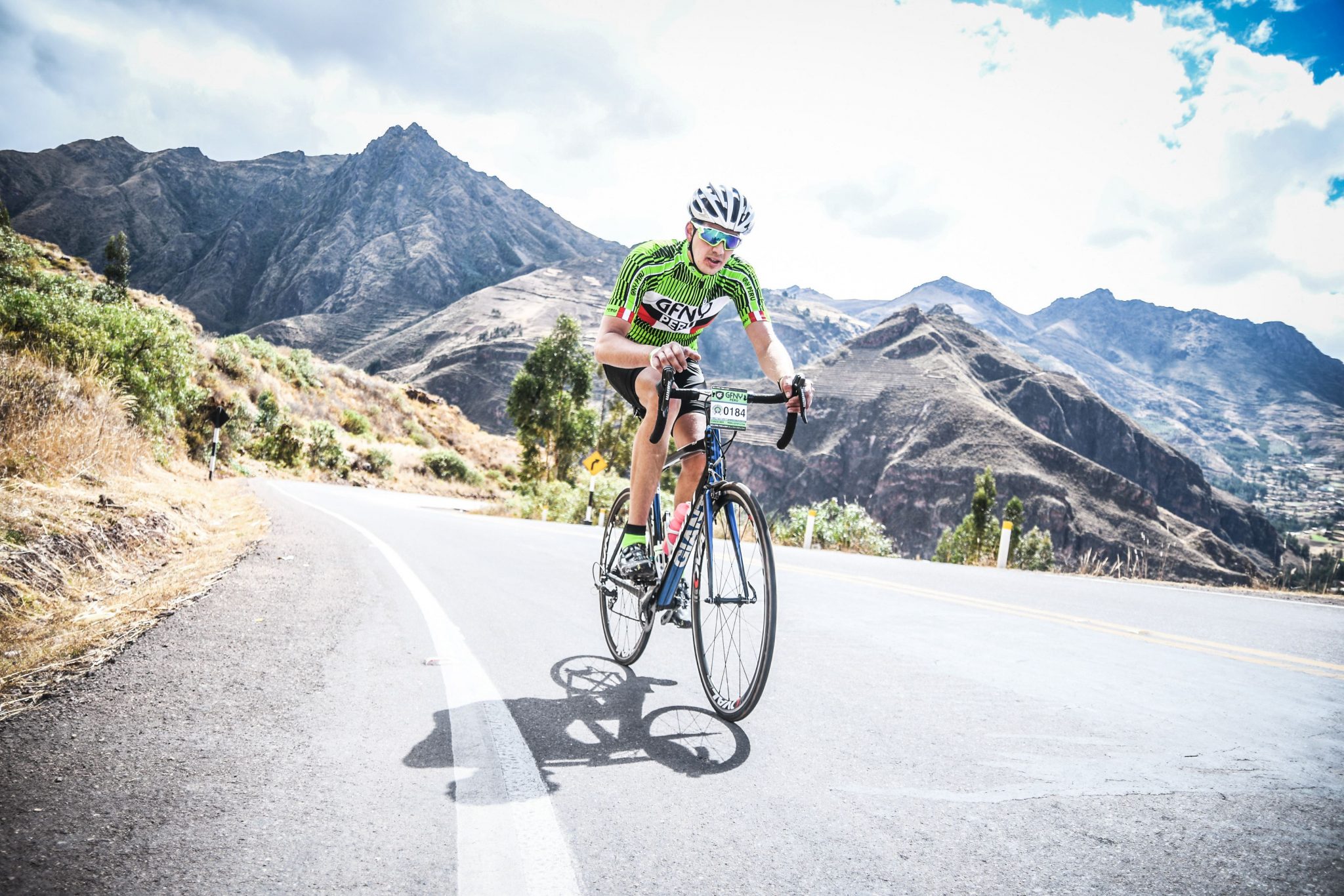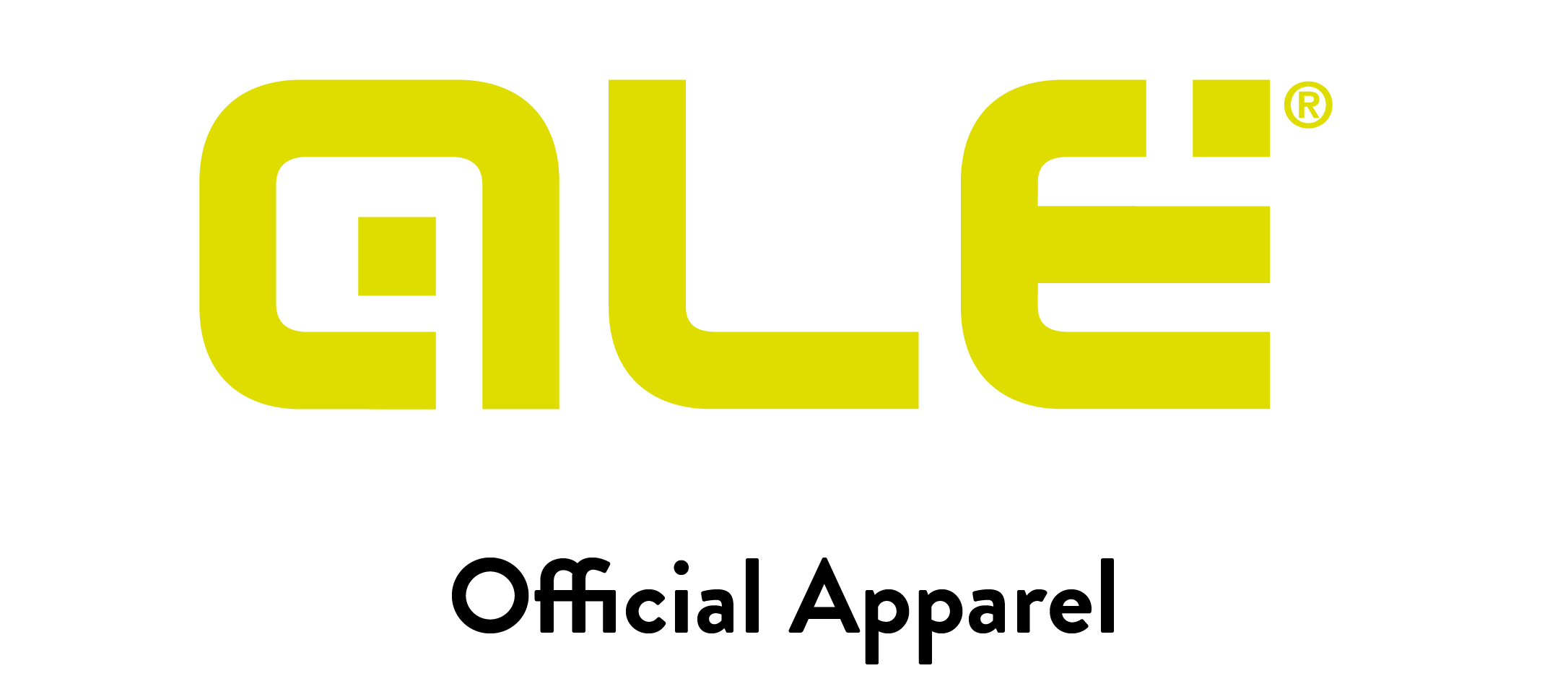GFNY Peru Course Guide
GFNY Peru
GFNY Peru is one of the most interesting challenges of the GFNY World series: high altitude, climbing, fast flat sections, and a downhill finish that is sure to put a smile on your face.
The race totals 82 miles or 132 km, with a total elevation gain of 5900 feet/1800 meters.
More than the climbing, though, the altitude will most likely be the biggest challenge of the race as the starting altitude is at 11,180 feet (3400 meters) and reaching its highest point at 12,400 feet (3780 meters).
Adjusting to high altitudes is all about acclimatization, but it takes your body days (or even weeks) to fully get used to being at a higher elevation.
Be A Pro For A Day in Paradise.

The Start
GFNY Peru will have you gasping for breath from the gun, with a difficult climb to open the day. Nearly straight off the starting line we hit a 4.5 mile (7.3 km) climb, taking you up to the high-point of the course at 12,400 feet (3780 meters).
The climb averages around a 5% gradient, but the altitude will make it tougher, and it will be enough to break the race up from the gun.
If you are hoping to finish in a reasonable time are well advised to take this climb steady and save your legs. However, after the first climb there is a long descent to recover, so you won’t have to worry too much about blowing up early as you’ll have a long time to recover.
However, if you are aspiring to the podium, you will need to do your best to make the front group over this climb, or it will be difficult to get back on during the descent. So, if the podium is your goal, a good pre-race warm up is a great idea to be prepared to hit the climb hard.
A Long Descent to Recover
After the first climb the race makes its way down a very long descent of nearly 20 kilometers in length. This epic downhill takes you to the low point on the course. These types of descents are almost always repeated later in the day as a climb, so if you haven’t done a course preview, use this descent to familiarize yourself with the last climb of the day.
You will want to avoid taking too many risks and ride within yourself on this downhill. However, after the descent is a long valley section where being in a group will be important. So, if you reach the top of the climb with a group, you should try to stay with them on the downhill. It’s always a good thing to have riders to work with on the flatter part of the course.
The Valley
Once you are off the climb the race comes to a long valley section of nearly 70 kilometers in length. This section is mostly flat and fast, and if you have never ridden at elevation before, you will see why so many world record attempts are done at altitude: it’s fast! You will fly along the flat sections on the way to the turnaround.
The turn-around is at 65 km/40 miles into the race. Just before the turnaround is the only climb of this section, a small bump that will take you to the U-turn where you will start heading back to Cusco.
Heading back could be even faster than heading out in the valley, as it’s slightly downhill towards the main challenge of the day; the long climb that will take you to the outskirts of Cusco and the highest point on the course.
The Climb
There’s no doubt that the most difficult challenge of GFNY Peru comes at the very end.
The biggest climb of the day is a 19 km/11.6 mile long drag that takes you well above Cusco before a fast plunge to the finish.
The average gradient is only 4.2%, so it’s not an overly steep climb. However, that average includes a few small downhill sections, so much of the climbing is steeper than the average. Not only that, but the climb kicks up with several steep sections near the top, where the altitude is at or above 12,000 feet. The gradient will combine with the altitude to make the climb tougher than distance or gradient suggests.
It’s best to tackle this climb at a good rhythm and hold back in the first half. Should you begin to suffer at altitude, it’s hard to recover, so if you start at too hard a pace, it’s very likely you will pay for it later in the climb.
Arriving at the top of the climb, a small plateau awaits before starting the descent. For those at the front racing hard, this could be a crucial spot: a chance to chase down riders who dropped you on the climb, a chance to attack before the descent, or a chance to roll through with a small group and make good time.
This 5 km flat section can be taken at a more tranquil pace for those further back. It’s a good chance to stay on the pedals and make progress, but you should soak up the accomplishment of the climb and know that the finish line is near.
Descent to the Finish
This fast descent will drop you back into the city of Cusco before one final stretch to the finish line.
Take note that the descent is on a different road than the climb seen early in the race. The initial part of the descent is fast and straight, but as you enter the city it becomes technical with plenty of curves and a few switchbacks. It’s worth having caution as this section is technical and you will likely be a bit tired.
The descent bottoms out just 2 km from the finish. This final 2km stretch to the finish line is slightly uphill and not too technical. A few turns will take you through town before arriving at a long finish stretch.
The final drag to the finish line is over 500 meters out of the last corner and up a false-flat drag. This long finish stretch will give you the opportunity for one last explosive effort if you are racing from the win or just challenging the other riders in your group.



Tags: Coaching



